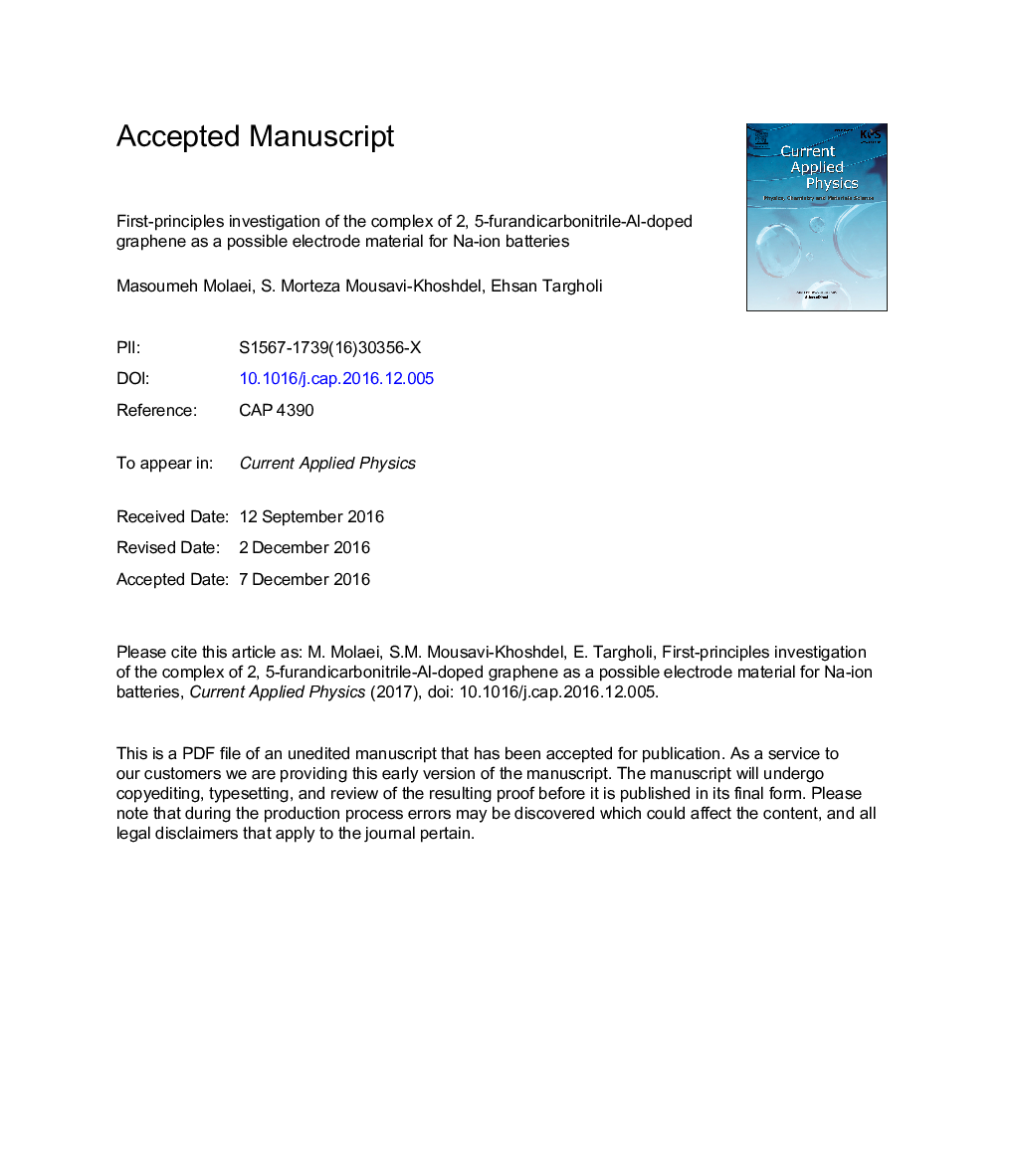| Article ID | Journal | Published Year | Pages | File Type |
|---|---|---|---|---|
| 5488959 | Current Applied Physics | 2017 | 17 Pages |
Abstract
The current article carried out density functional theory calculations to investigate the 2, 5-furandicarbonitrile (FUDCN) capability for storing Na atoms. The results indicated that this organic molecule could adsorb two sodium atoms with 454 mAh gâ1 value of specific theoretical capacity. To assure high conductivity and stability of this molecule as an electrode material for Na-ion battery, Al-doped graphene was considered as a suitable substrate with a strong binding energy (â1.87 eV) to anchor the FUDCN molecule. An interesting result was a little dependency between binding energy values and the number of the inserted Na atoms, which means that FUDCN-Al-Graphene could adsorb more Na atoms in comparison to FUDCN molecule. The high sodium storage capability, suitable voltage range, easy diffusion of sodium atoms, along with high conductivity and stability are some advantages of application of this structure as anode electrode material in Na-ion batteries.
Related Topics
Physical Sciences and Engineering
Physics and Astronomy
Condensed Matter Physics
Authors
Masoumeh Molaei, S. Morteza Mousavi-Khoshdel, Ehsan Targholi,
